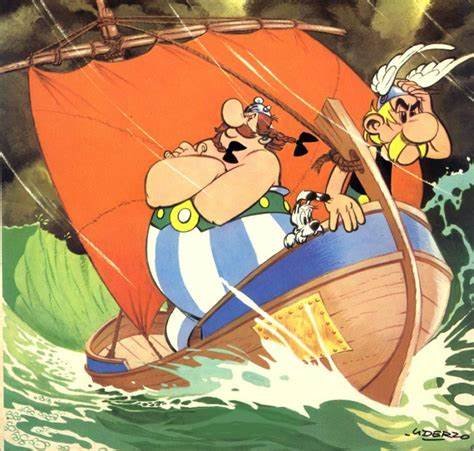Political cartoons have been a significant medium for commentary and critique throughout history. Combining art and satire, they communicate complex political and social messages in a way that resonates with the public. Let’s delve into how these impactful illustrations shape public opinion.
1. A Brief History of Political Cartoons
Political cartoons date back to the 18th century, with pioneers like James Gillray and Thomas Nast using illustrations to critique leaders and policies. Nast, often referred to as the “Father of the American Cartoon,” famously targeted political corruption, helping to dismantle the Tammany Hall political machine. These early works laid the foundation for cartoons as a tool for social and political influence.
As literacy rates increased, political cartoons gained prominence in newspapers and magazines, becoming an essential part of public discourse. Today, they continue to evolve, adapting to digital platforms and global audiences.
2. Simplifying Complex Issues
Political cartoons distill intricate topics into accessible visuals and humor.
- Visual Impact: A single image can convey a message more effectively than paragraphs of text.
- Widespread Appeal: Cartoons reach diverse audiences, including those who may not engage with traditional news.
- Universal Language: The use of symbols, caricatures, and imagery transcends language barriers, making cartoons relatable to a global audience.
Cartoons often break down complex subjects like economic crises, war, and political scandals into digestible pieces, ensuring even difficult topics gain public attention and understanding.
3. Holding Power to Account
Cartoons serve as a form of checks and balances in democratic societies.
- Critique of Leadership: They challenge leaders and policies, fostering accountability.
- Highlighting Injustice: Cartoonists spotlight social and political inequalities, rallying public support for change.
- Exposing Corruption: By exaggerating flaws and drawing attention to unethical practices, cartoons have historically contributed to political reforms and justice.
For example, during the Watergate scandal, political cartoons played a pivotal role in keeping the public engaged and critical of those in power.
4. The Role of Humor and Satire
Humor in political cartoons makes difficult topics approachable.
- Eliciting Emotional Responses: Satire provokes laughter, anger, or reflection, engaging viewers on a deeper level.
- Memorability: A witty cartoon sticks in the mind, spreading its message far and wide.
- Encouraging Dialogue: Humor can soften contentious issues, making it easier for opposing sides to engage in discussion.
Through their clever use of irony and symbolism, cartoonists create works that resonate emotionally, encouraging viewers to question the status quo.
5. Shaping Public Opinion
Political cartoons influence how people perceive events and issues.
- Framing Narratives: They can present a biased or alternative perspective on current events.
- Mobilizing Action: Cartoons often inspire activism by exposing corruption or promoting social causes.
- Influencing Elections: During political campaigns, cartoons can sway public perception of candidates through exaggerated depictions of their strengths or weaknesses.
Cartoonists often use recurring themes and characters to reinforce their messages, ensuring their critiques remain fresh in the public’s memory.

6. Challenges for Political Cartoonists
Despite their power, political cartoons face criticism and limitations.
- Censorship and Backlash: Governments and institutions sometimes suppress controversial cartoons.
- Navigating Sensitivities: Cartoonists must balance satire with respect for diverse viewpoints.
- Evolving Ethics: The line between free speech and offensive content is often debated, leaving cartoonists vulnerable to criticism.
Notable controversies, such as the 2005 Jyllands-Posten Muhammad cartoons, highlight the challenges cartoonists face in navigating cultural sensitivities while maintaining their freedom of expression.
7. The Digital Era and Political Cartoons
The internet has amplified the reach of political cartoons.
- Global Audiences: Digital platforms allow cartoons to transcend national boundaries.
- Interactive Elements: Animated and interactive cartoons enhance engagement.
- Viral Potential: Memes and shareable content spread messages quickly.
- Increased Accessibility: Social media platforms have democratized access, allowing independent cartoonists to reach vast audiences.
Digital tools have also expanded the artistic possibilities for cartoonists, enabling more dynamic and impactful visuals.
8. Educational and Cultural Impact
Political cartoons also play a significant role in education and culture.
- Teaching History: Historical cartoons provide insight into the public sentiment and cultural values of their time.
- Promoting Critical Thinking: Analyzing cartoons helps students and readers develop critical thinking skills and understand complex ideas.
- Preserving Culture: Political cartoons capture the zeitgeist, acting as cultural artifacts that reflect societal attitudes and priorities.
Conclusion
Political cartoons remain a vital tool in shaping public discourse, challenging authority, and advocating for social change. By combining artistry, humor, and critique, they engage audiences in ways that traditional media cannot. As society evolves, so too does the art form, continuing to influence and inspire audiences worldwide.











